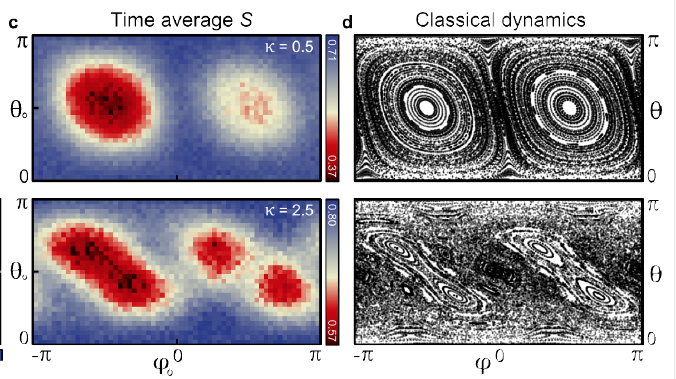Best of Last Week–Blurring lines between classical and quantum physics, why turtles have shells and new way to get happy

(ScienceX)—It was another good week for physics as a combined team of researchers with Google and UC Santa Barbara blurred the line between classical and quantum physics by connecting chaos and entanglement, a finding that suggests it might be possible to use quantum systems to learn more about some of the fundamental aspects of nature. Also, a team at Leiden Institute of Physics announced that they had developed an MRI machine that broke world records at the nanoscale—the nuclear magnetic resonance microscope is expected to offer researchers a new tool for studying the fundamentals of physical processes.
In space news, a NASA camera caught the moon 'photobombing' Earth—for just the second time, the Deep Space Climate Observatory satellite captured a view of the moon as it passed in front of the Earth, offering an interesting view. An international team of scientists created the biggest galactic map ever hoping to throw light on 'dark energy'. It is three-dimensional and represents a decade of work. And workers at South Africa's MeerKAT station released the first image from the world's super radio telescope—it is still running at just a fraction of its full strength, but still managed to reveal 1,300 galaxies in a part of the night sky where only 70 had been seen before.
In other news, a trio of researchers from the Centre for Ecology and Hydrology and Lancaster University in the U.K. conducted a solar panel study that revealed the impact on the Earth—they learned more about the ways that solar parks impact the environment around them. Also, a team of researchers at École Polytechnique Fédérale de Lausanne in Switzerland developed a method by which electricity can be generated with water, salt and a three-atoms-thick membrane—the membrane sits between sea water and fresh water and generates power using osmosis. And researches at the University of Virginia School of Medicine discovered a shocking new role for the immune system: Controlling social interaction—they claim it actually plays a part in behavior and dealings with others. Also, a team of researchers with members from South Africa, the U.S. and Switzerland claim to have discovered the real reason why turtles have shells—to help with burrowing.
And finally, if you are one of the millions of people across the globe looking to improve your outlook, you might want to consider a study conducted by a team at the University of Warwick, in the U.K.—they found that eating more fruit and vegetables can substantially increase happiness levels—clearly food for thought.
© 2016 ScienceX